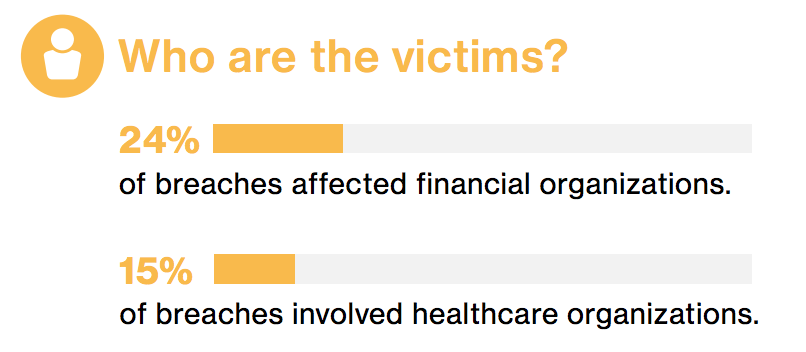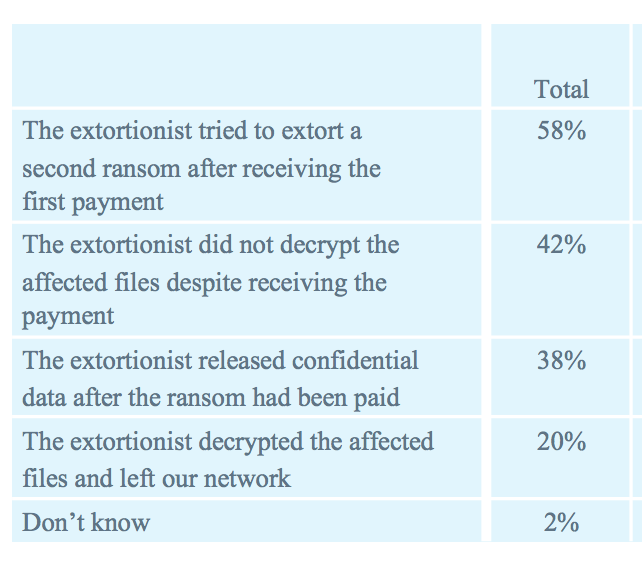What’s a bit of spam and a bit of phishing, right? It’s all the cost of doing business…until you look at what it really CAN cost your business.
The latest statistics from the Internet Crime Complaint Center (IC3) are enlightening – taken directly from the IC3 site:
The following BEC/EAC statistics were reported to the IC3 and are derived from multiple sources, including IC3 and international law enforcement complaint data and filings from financial institutions between October 2013 and May 2018:
Domestic and international incidents: 78,617
Domestic and international exposed dollar loss: $12,536,948,299
The following BEC/EAC statistics were reported in victim complaints where a country was identified to the IC3 from October 2013 to May 2018:
Total U.S. victims: 41,058
Total U.S. victims: $2,935,161,457
Total non-U.S. victims: 2,565
Total non-U.S. exposed dollar loss: $671,915,009
The following BEC/EAC statistics were reported by victims via the financial transaction component of the IC3 complaint form, which became available in June 20163. The following statistics were reported in victim complaints to the IC3 from June 2016 to May 2018:
Total U.S. financial recipients: 19,335
Total U.S. financial recipients: $1,629,975,562
Total non-U.S. financial recipients: 11,452
Total non-U.S. financial recipients exposed dollar loss: $1,690,788,278
That’s billions with a B…and the dollars and cents cannot measure the intangible costs like reputation, consumer confidence, etc.
What are the growing targets, and vectors of compromise? Financial transactions of all kinds tend to be the low hanging fruit. Real estate transactions, wire transfers, anything with a routine methodology of process, where information requests are constant, and a change of source or target would not be unusual. What’s another call from the bank, asking to verify your account information for payment? Another wire transfer request from the CFO?
There are also information breaches to consider. Let’s look at DocuSign for a moment – their own statement admits that email addresses were compromised, but indicates that additional personal information was not at risk. This statement is a bit misleading. A threat actor could collate the additional info to make an attack appear legitimate through other sources – and the fact that these emails came from DocuSign means that they would legitimately expect to receive email FROM DocuSign! In sales, that’s a pre-qualified lead, and it’s no less valuable to an attacker.
Another high-profile incident is the indictment of Russian operatives in the DCCC and DNC compromise – MSI has written about that here.
Add the preponderance of mobile devices, webmail, and online portals to your business of all kinds…it’s a risk. And any breach of your business data, client/customer data, and/or employee data is high profile as a risk to YOU. MSI has had a number of clients this year with compromises of Office 365 email accounts, administrative accounts that were externally facing, wire transfer issues, etc. On a personal level, individuals have had fraudulent tax returns filed under their SSN, etc. Size is irrelevant when it’s your data (and money) at risk.
So, what can you do to protect yourself, and your company? Email filtering, mobile device management, and other security measures can help – but the one measure that is consistently most effective against these attacks is MFA – multi-factor authentication. MFA is, at its core, something you know and something you have.
Often, this is an SMS code, or something physical like an RSA hard or soft token. However, do not rule out MFA for less technical transactions. In a situation where the CFO emails in a wire transfer, also add a vocal component – the individual must call and answer a challenge response question.
Are there challenges to implementing MFA? Of course. One of the primary challenges is user resistance – one of my favorite sayings is…change is inevitable, except in vending machines. But humans are wired to see their consistent patterns as a comfort, and you’re asking them to leave their comfort zone.
Another challenge is the technology gap. NIST is no longer recommending SMS as a component of MFA – but if that is all your organization is capable of leveraging, is it better than nothing? That’s a question for your technical and risk staff to consider.
The solution you choose will always NOT work for someone or something in your organization – someone will have a device that is too old, or incompatible, and they’re high enough up the corporate ladder that allowances will be considered. If you use a hardware token, someone will break it at a critical moment – or the USB token won’t work with their new whizz bang device.
And once you begin implementation, your organization won’t go from zero to 100% compliant immediately – in addition to dealing with the outliers, you’ll need a transition plan while implementation is underway.
Documented policies and procedures will need to be present – create these as you go, it will be a less onerous task than after the fact. In the case of our verbal challenge and response for a wire transfer example, where will those procedures be kept and how will they be protected – they should be safe from easy compromise, but not invalidate the solution when the primary person is out of the office?
Then there’s the issue of critical software that may need to be externally facing, but doesn’t support MFA. What do you do when the developers cannot implement this in a manner to protect your company? “The program wouldn’t do it” will be of little comfort when you’ve been compromised.
Are the challenges overwhelming? We cannot LET them be, folks. Scroll back up to those numbers – that’s billions with a B. Consider the challenges as things to rise up and meet, in the best way for your organization – rather than mountains that you simply cannot climb.
Questions, comments? I’d love to hear from you – lwallace@microsolved.com, or @TheTokenFemale on Twitter!
If you would like to know more about MicroSolved or its services please send an e-mail to info@microsolved.com or visit microsolved.com.





